Projects/Fairs
Feria Material | Main Section – Booth A16 | Mexico City
_VIGILGONZALES is pleased to announce its participation in FERIA MATERIAL VOL. 10, to be held February 8-11 in Mexico City, in the striking Juarez neighborhood. During the Mexico City Art Week, our mission is to continue strengthening the ties of the Latin American and Spanish-speaking art market. Our Booth A16 _VIGILGONZALES will feature pieces by Karina Skvirsky (1977, Rhode Island), Gonzalo Hernández (1991, Lima) and José Luis Martinat (1974, Lima).
The artists are protected by a dive into their own biography, where the work exhibited is a symptom of reflexive self-perception, charged with politicality and a record of the times in which they live. Encolumned between the rows of the "Andean utopia", a concept coined by Alberto Flores Galindo, the three artists move away from dogmatism to fully exercise their questioning contribution to the intellectual field, innovating in their language those kicks that their own journey as Latin American and migrant artists has enabled them.
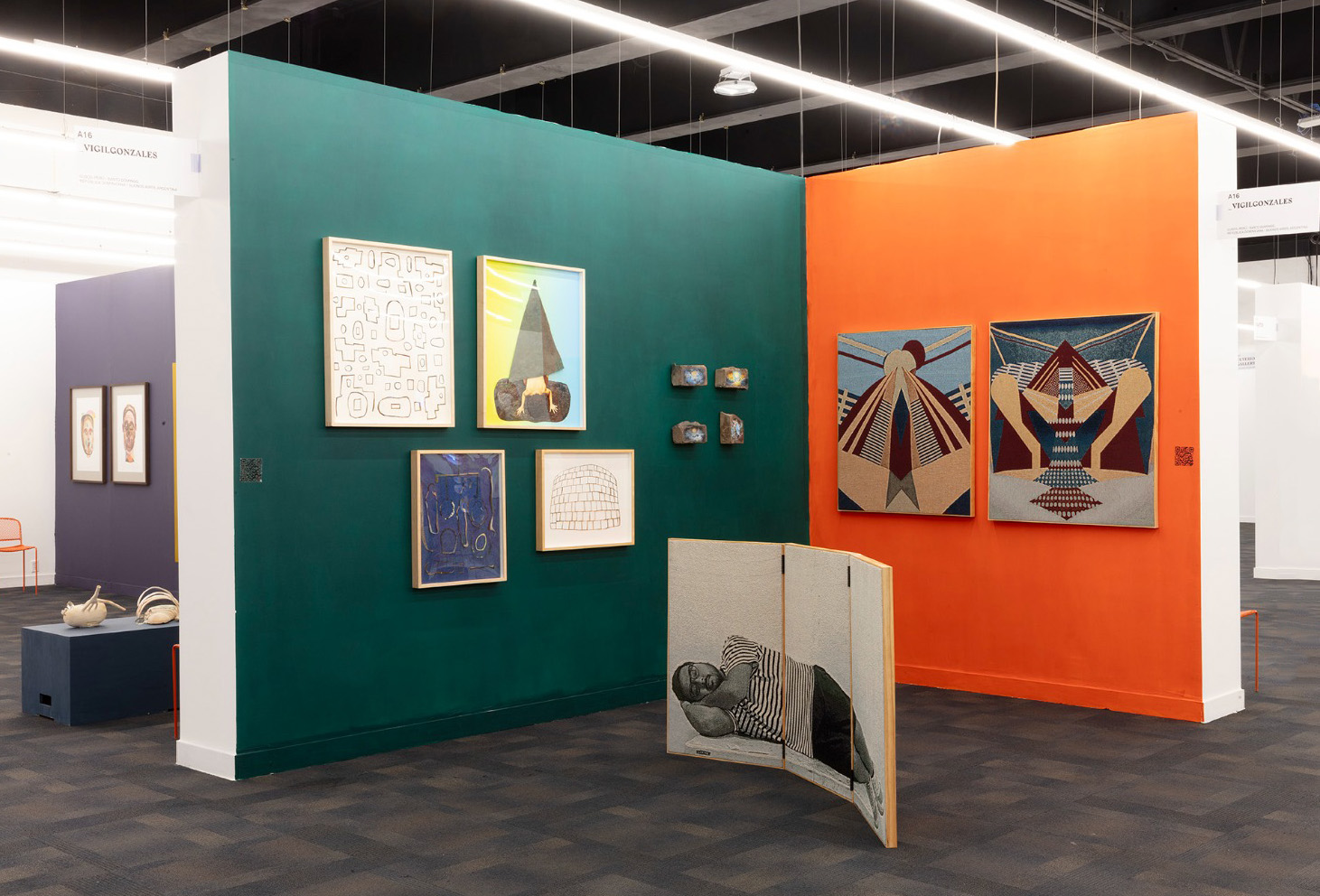
The habitat of Karina Skvirsky's work is the intersection between heritage and perception, shaped by family narratives and upbringing. With Ecuadorian and Jewish-American roots, her inquiry thematizes identity, belonging and nationality. He focuses on the ruins of Ingapirca as an iconology of overlapping cultural layers. Skvirsky employs collages to explore stone as an archetypal image, intertwining it with the female figure. Geometric abstraction and seventies palette dialogue with abstract modernity, while pre-Columbian architecture manifests itself. Her work challenges the limitations of cultural appropriation by addressing complex themes without simplification. He offers his perspective that counters politically correct discourse, challenging conventional categories of otherness.
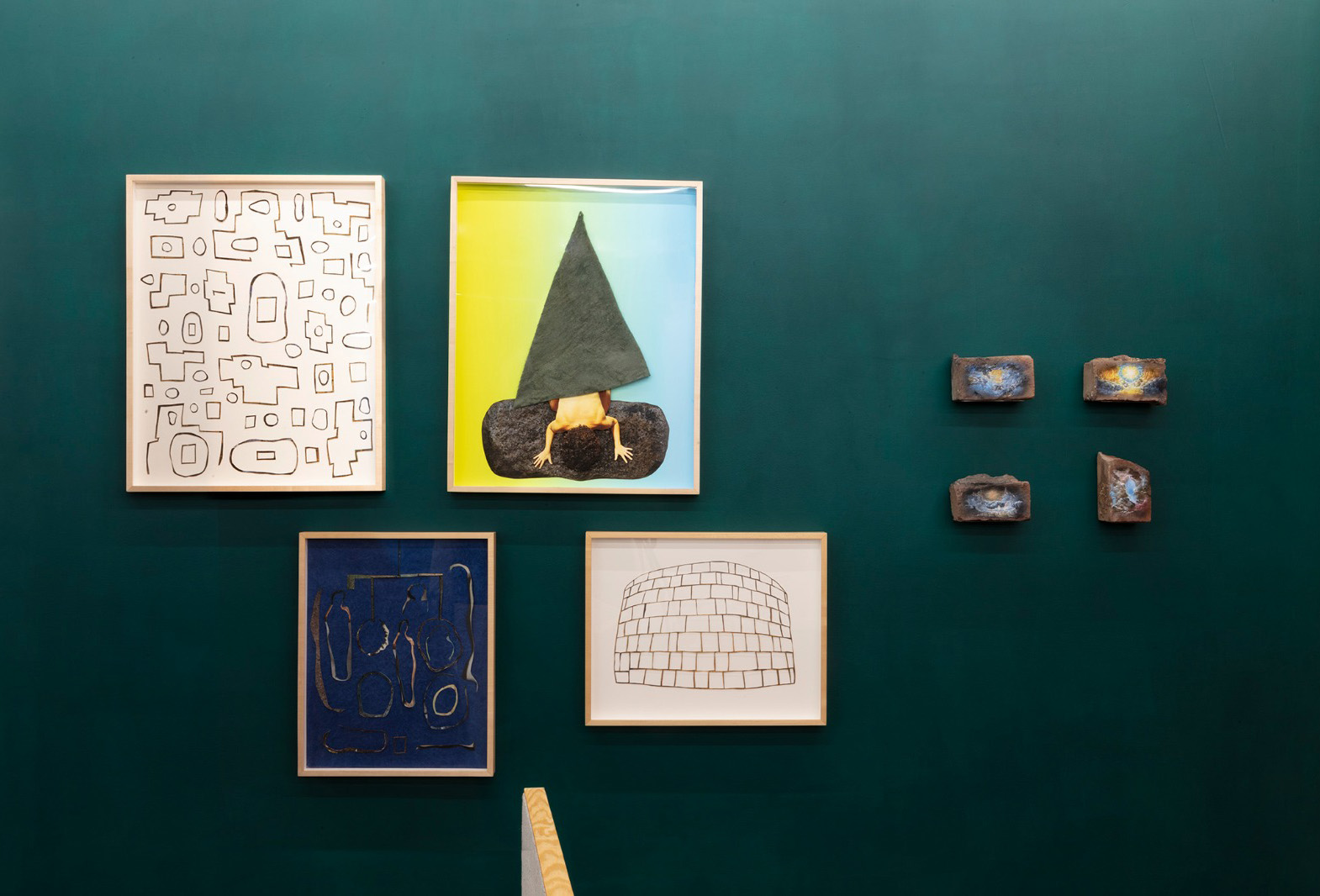
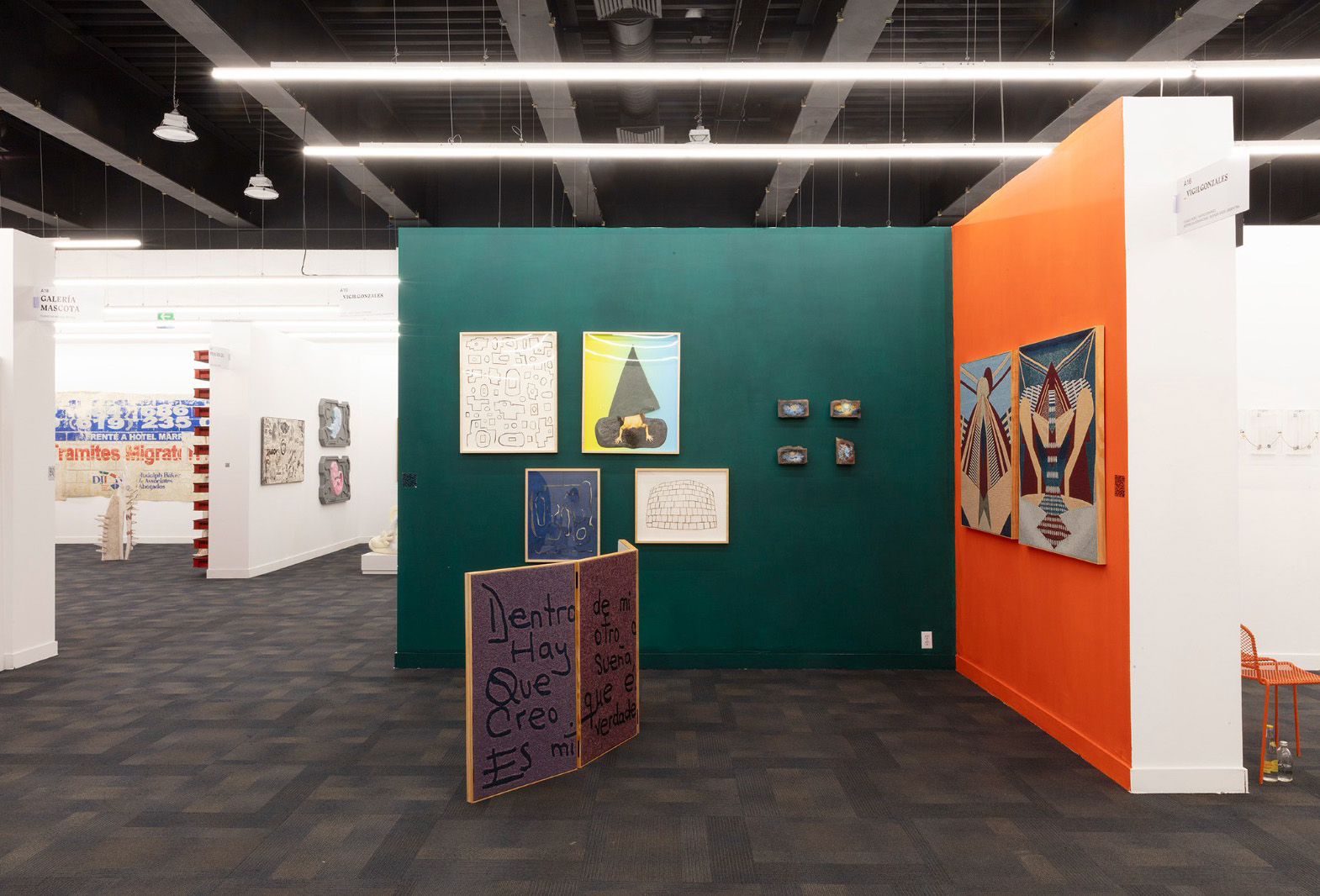
José Luis Martinat's artistic practice stands out as an intricate process of transformation and reinterpretation of elements.The work of José Luis Martinatseeks to transform and reformulate materials based on their plasticity. By distorting pre-existing materials, he alters their original meaning to open up the possibility of new associations and interpretations. Martinat has managed to synthesize the format of the contemporary piece, whose value is re-signified in each exhibition, by dialoguing with the macro and micro political system. Interested in the channels of dissemination of hegemonic discourses, he articulates in his work a critical reading of their artificiality and their inherent influence on our perception of reality. As a Peruvian migrant in Sweden, he is in constant dialogue with the public sphere of Latin American contemporaneity. Art, in this diagram of experiences, operates as an assistant to process and as a platform for rewriting and interpretation.
Gonzalo Hernández's appropriating gesture is a reflexive act through which the artist questions the position of his own aesthetic discourse and proceeds to share his conceptual atmosphere. This impulse is related in Hernández to that of an editor or a professor, that is, the one in charge of selecting and highlighting certain milestones in the history of contemporary art. Without avoiding an abyss, the term "contemporary history" evidences the ambivalence and superimposition of past and present, where Hernández's work is a folding fold. Gonzalo Hernández makes a textile version of his selection of the holographic and unpublished notebooks of Luis Hernández, Peruvian poet of the 60's generation. The artist satisfies the need to do justice to the greatest problem that Luis Hernandez's work suffers from: its dispersion, a hindrance to criticism. This is how the artist unearths a literary letter little known to the globalized sphere of the art market, and he is part of a neo-historiography, one that uses visual and objectual language in the foreground.
The support chosen by Gonzalo Hernandez for his interpretation is the folding screen, an oriental object of domestic use. The etymology reveals its purpose: "to protect from the wind", a function of the screen that is in line with the role of poetry, which provides a space for intimacy and shades the light. Hernández respects and gives continuity to the acentric logic of the work of the eponymous poet by capturing a narrative sequence in the six selected images. Also presented is the work "The necktie_01&_02 après Gloria Gómez-Sánchez, a textile version of Gloria Gómez-Sánchez's Corbata (1968), recognized by the media as a "strident piece" for its evident critique of gender structures and its large dimensions, made in the midst of the emergence of the neo-avant-garde movements. Hernandez sustains a research that is close to the work of Gomez Sanchez, whom he describes as "a Peruvian artist who decided to leave the art world". Fifty-eight years after its first edition, Corbata is reincarnated in Jacquard weaving, captained by Hernandez. The notion that an artwork can be reincarnated enlivens a specific approach to those pieces produced by our fellow countrymen: entering into a dialogue with them can certainly serve as a decisive and unprecedented layer of conceptual sense, which also builds bridges in the study and exhibition of Latin American art. Hernandez's teaching eye summons us to value.
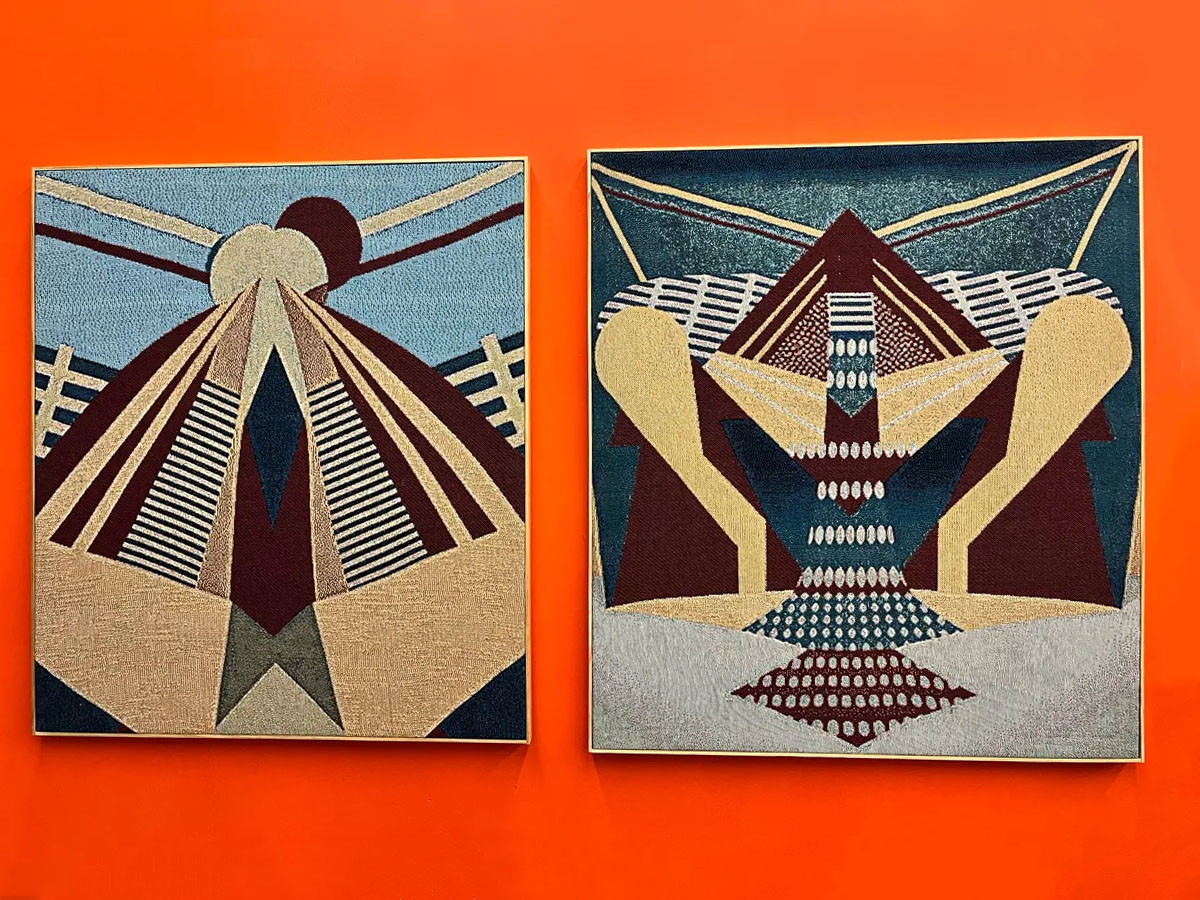
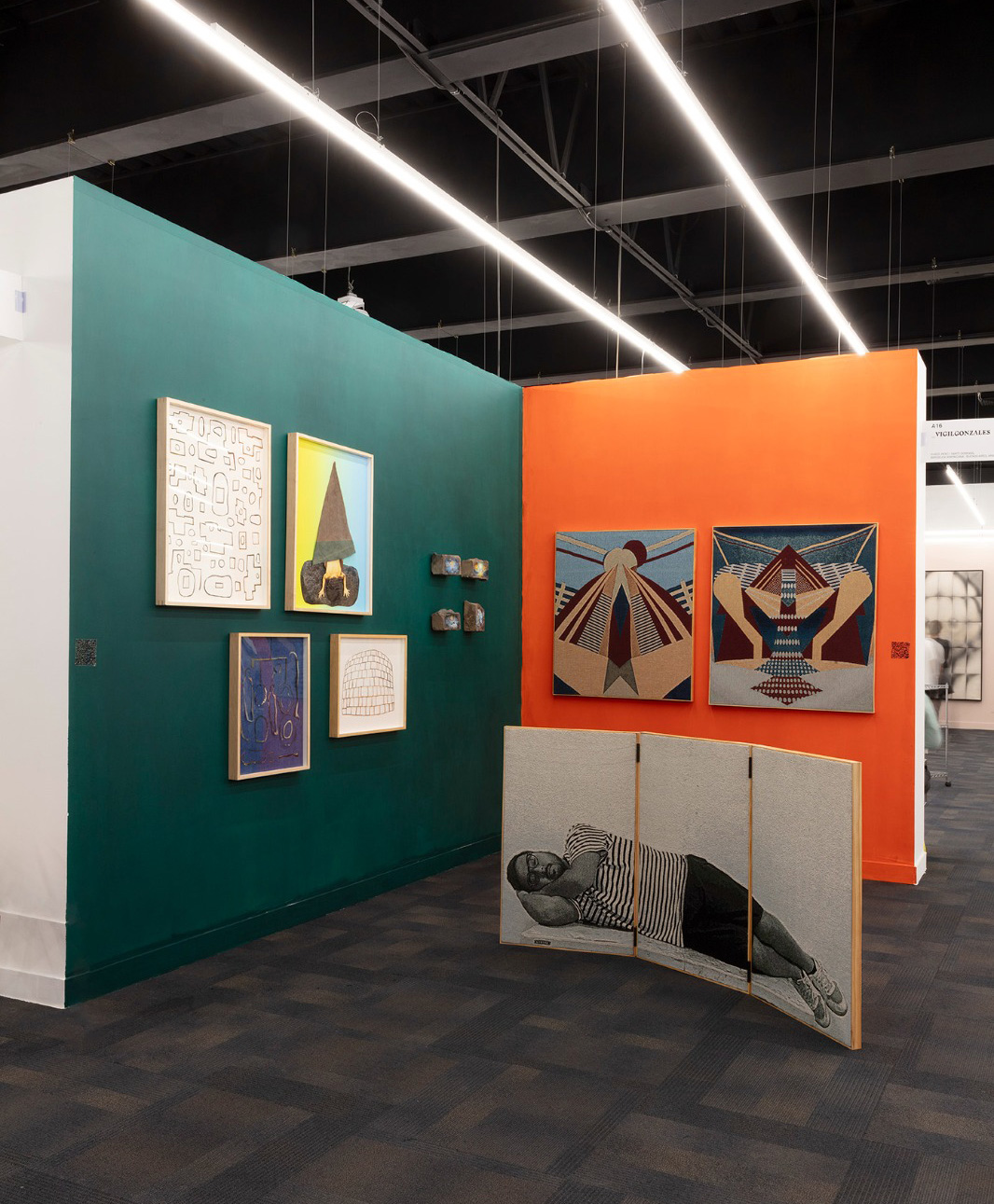
Artists:
Karina Aguilera Skvirsky
José Luis Martinat
Gonzalo Hernández